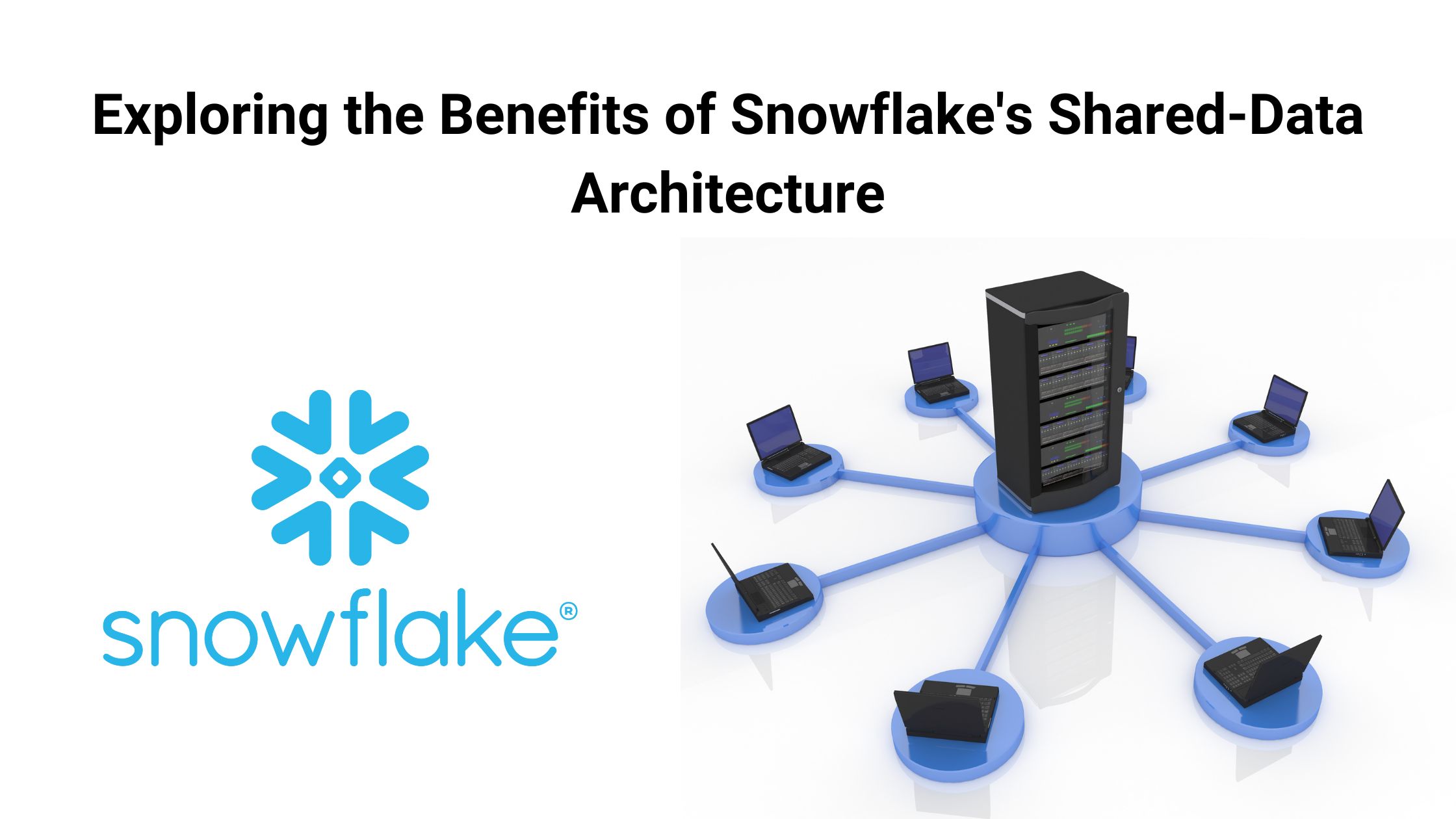Introduction
In a time when data serves as the vital essence of businesses, Snowflake has risen as a transformative force in the Data & Analytics landscape. This state-of-the-art cloud datawarehouse is revolutionizing the realm of data administration by delivering unparalleled scalability, concurrency, and performance.
The numbers speak for themselves: Snowflake customers collectively process an astonishing 2.6 billion data queries on the Data Cloud, powering over 515 million data workloads daily, showcasing the growing importance of Snowflake in today’s data-driven landscape.
In this blog, we’ll delve into the intricacies of how Snowflake’s architecture functions, empowering organizations to harness the true potential of their data.
Let’s jump right in!
Brief overview of Snowflake as a cloud data platform
Snowflake is a leading cloud data platform that revolutionizes data management and analytics. Built for the cloud, it offers a scalable, fully managed data warehouse service that enables organizations to store, process, and analyze vast amounts of data with ease. With its exceptional architecture, Snowflake decouples storage and compute, granting users the ability to separately expand these elements, ultimately yielding cost-efficiency and exceptional performance. It supports a wide range of data types and integrates seamlessly with popular BI tools and data science platforms.
With its advanced security features and multi-cloud support, Snowflake’s role in modern analytics empowers businesses to make data-driven decisions and drive innovation in a rapidly evolving digital landscape.

Snowflake Data Warehouse Architecture
1. Shared Disk Architecture
Snowflake’s data warehouse architecture utilizes a shared disk model, where multiple compute clusters can simultaneously access a centralized, shared storage layer. In this approach, data is stored in a highly scalable and redundant storage system, such as Amazon S3 or Azure Blob Storage, while compute clusters independently process queries.
This separation of storage and compute allows for seamless scalability and efficient resource utilization, as additional compute resources can be easily added or removed to meet changing workloads. Moreover, data consistency and durability are maintained through a shared storage layer, enabling real-time data sharing and simplified data management across the organization.
2. Shared-Nothing Architecture
Contrastingly, Snowflake architecture also incorporates elements of a shared-nothing architecture within its overall design. Within a single compute cluster, a shared-nothing approach is applied, meaning that each node in the cluster operates independently and stores a subset of the data. Data distribution is typically managed through a technique called micro-partitioning, where data is divided into smaller, more manageable pieces.
This approach enhances query performance by allowing parallel processing on different nodes without contention for shared resources. Snowflake’s blend of shared disk and shared-nothing architectures combines the benefits of both, resulting in a highly scalable and performant data warehousing solution suitable for various analytical workloads.
Snowflake Architecture Layers: An Extensive Analysis
Snowflake’s architecture consists of three primary layers: the Database Storage layer, the Query Processing layer, and the Cloud Services layer. These layers enable Snowflake’s scalable, elastic, and data-sharing capabilities.

1. Database Storage Layer:
The Database Storage Layer in Snowflake is the foundation of its architecture. It employs an innovative, cloud-optimized storage format called micro-partitions. Data is stored in these micro-partitions, which are automatically compressed and encrypted. This layer ensures efficient data storage and retrieval, allowing for seamless scalability as data volumes grow.
It separates storage from compute resources, enabling cost-effective storage scaling and optimal data management.
2. Query Processing Layer:
The Query Processing Layer is responsible for executing SQL queries submitted by users. It leverages the multi-cluster, shared-nothing architecture to distribute and parallelize query workloads across multiple compute clusters.
Snowflake’s unique virtual warehouses manage these clusters, dynamically allocating resources to optimize query performance. This layer also includes query optimization, parsing, and execution, ensuring speedy and efficient data processing for various workloads and analytical tasks.
3. Cloud Services Layer:
The Cloud Services Layer serves as the control plane for Snowflake’s architecture. It manages user authentication, access control, and metadata, providing a secure and centralized point for administration. This layer orchestrates various services like data loading, replication, and failover, making it easier to manage and maintain the platform.
Furthermore, it excels in resource administration and performance enhancement, guaranteeing both cost savings and scalability in a cloud-native landscape, all while remaining adaptable to changing requirements.
The Future of Data Warehousing: Snowflake’s Multi-Cluster, Shared-Data Innovation
In a world where data is the lifeblood of businesses, Snowflake’s multi-cluster, shared-data architecture stands as a beacon of innovation. This remarkable technology not only simplifies the complexities of data management but also accelerates analytics, propelling organizations towards data-driven excellence.
As we’ve delved into the intricate workings of Snowflake’s architecture, it’s clear that the future of data warehousing has arrived. The seamless blending of multi-cluster processing with shared data not only ensures scalability but also guarantees security and efficiency. Snowflake’s commitment to customer-centric solutions is evident, and its adaptability to evolving data landscapes is unmatched.
So, whether you’re a data scientist, analyst, or a business leader, Snowflake’s architecture empowers you to harness the true potential of your data. It’s a game-changer that paves the way for data-driven success, setting the stage for a future where businesses thrive on insights, not just information. Embrace the snowstorm of innovation; embrace Snowflake.
Your data-driven journey starts here.


